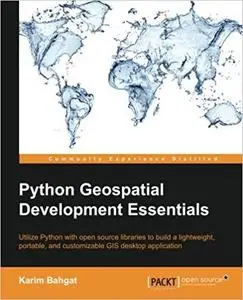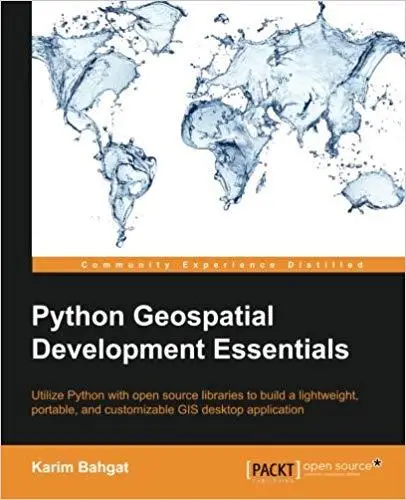Python Geospatial Development Essentials by Karim Bahgat
English | June 17, 2015 | ISBN: 1782175407 | 143 pages | PDF/EPUB/MOBI | 9.03 Mb
English | June 17, 2015 | ISBN: 1782175407 | 143 pages | PDF/EPUB/MOBI | 9.03 Mb
Utilize Python with open source libraries to build a lightweight, portable, and customizable GIS desktop application
About This Book
- Develop a GIS application that you can easily modify and customize
- Optimize your GIS application for user productivity and efficiency
- Discover Python's many geospatial libraries and learn how they can work together
This book is ideal for Python programmers who are tasked with or wish to make a special-purpose GIS application. Analysts, political scientists, geographers, and GIS specialists seeking a creative platform to experiment with cutting-edge spatial analysis, but who are still only beginners in Python, will also find this book beneficial. Familiarity with Tkinter application development in Python is preferable but not mandatory.
What You Will Learn
- Design and structure a basic GIS application based on existing tools
- Customize Tkinter application widgets to make your very own toolkit of flexible and reusable GIS widgets
- Load, manipulate, and save spatial data, both vector and raster
- Create an interactive and zoomable window for visualizing spatial data
- Manage and organize spatial data
- Create the beginnings of a comprehensive Python library for many types of geospatial tasks, and use this API as the engine behind your application
- Package your final application into a lightweight and portable executable application
This book provides you with the resources to successfully develop your own GIS application in Python. The book begins by walking you through the loading and saving of data structures before you start to build the look and feel of your application and create its interactive map window. You'll then move on to managing, editing, and analyzing spatial data from within the application and finish with instructions for packaging the application for distribution.
By the end of the book, you should be able to use your GIS application as a template for further development, with the potential to expand and customize it to suit your needs.



